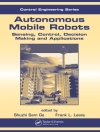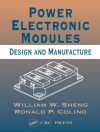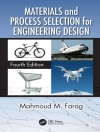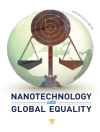In this compilation, the authors discuss nanopowders, or powders with a particle size of less than 100 nanometers. Several nanopowder types have effectively been synthesized with potential applications as follows: Fe3O4 and Ba Fe6O19 (as magnetic materials, microwave absorbent, magnetic fluid and gel), Si O2 (as fillers to enhance mechanical strength), and Ca CO3 (as coating for corrosive protection, food additives, cosmetics and drugs). This method allows for the production of high purity nanopowders with a moderately narrow crystal size distribution and unique morphology. Next, the innovative approaches to address the lightning strikes and EMI shielding effects on composite aircraft are examined, noting that composite aircraft protection against lightning is more complex due to the anisotropic nature of composite structure and high resistance of carbon in epoxy resins. The authors go on to present results of studies of composite electrochemical coatings modified by nano- and microparticles of various natures are presented, considering the operational properties and structural features of main types of composite coatings. Later, recent advances in synthesising highly ordered Titana nanotubes are explored, with regard to selection of suitable titanium based substrate and electrolyte apart from process parameters. These parameters include temperature, p H, voltage and applications in the areas of global warming , solar energy, photocatalytic applications, biomedical starting from implants to drug-eluding stents, sensors, and hydrogen storage. A chapter is presented on practical ways for fabricating cost-effective equipment for deposition of nanofilms, covering the most versatile techniques of sol-gel deposition and sputter-coating. The authors maintain that by applying individual ingenuity to the described frugal techniques, the reader should be able to form nanofilms of various materials with properties tailored to suit the intended application. Afterwards, the authors describe the soft, hard templated, and hierarchically ordered strategies concerning nanotechnology applied to fabricate porous carbon materials. Additionally, relevant advantages and disadvantages aim to provide the vital information about the growing field for future energy to minimize the potential environmental risks. Moving on, the authors introduce new research and related literature concerning the synthesis of cobalt diselenide (Co Se2) nanoneedle arrays for efficient hydrogen evolution electrolysis. Future aspects for improving the performance of transition metal dichalcogenide-based electrocatalytic electrodes are also examined. Lastly, a study on formation of nanoporous silicon and germanium layers with silver nanoparticles by low-energy high-dose ion implantation is presented. The authors suggest ion implantation for the formation of naoporous semiconductor thin layers, which could be easily combined with the crystalline matrix for various applications.
Zacharie Bartul & Jerome Trenor
Advances in Nanotechnology. Volume 20 [PDF ebook]
Advances in Nanotechnology. Volume 20 [PDF ebook]
Köp den här e-boken och få 1 till GRATIS!
Formatera PDF ● Sidor 218 ● ISBN 9781536129038 ● Redaktör Zacharie Bartul & Jerome Trenor ● Utgivare Nova Science Publishers ● Publicerad 2017 ● Nedladdningsbara 3 gånger ● Valuta EUR ● ID 7217514 ● Kopieringsskydd Adobe DRM
Kräver en DRM-kapabel e-läsare












